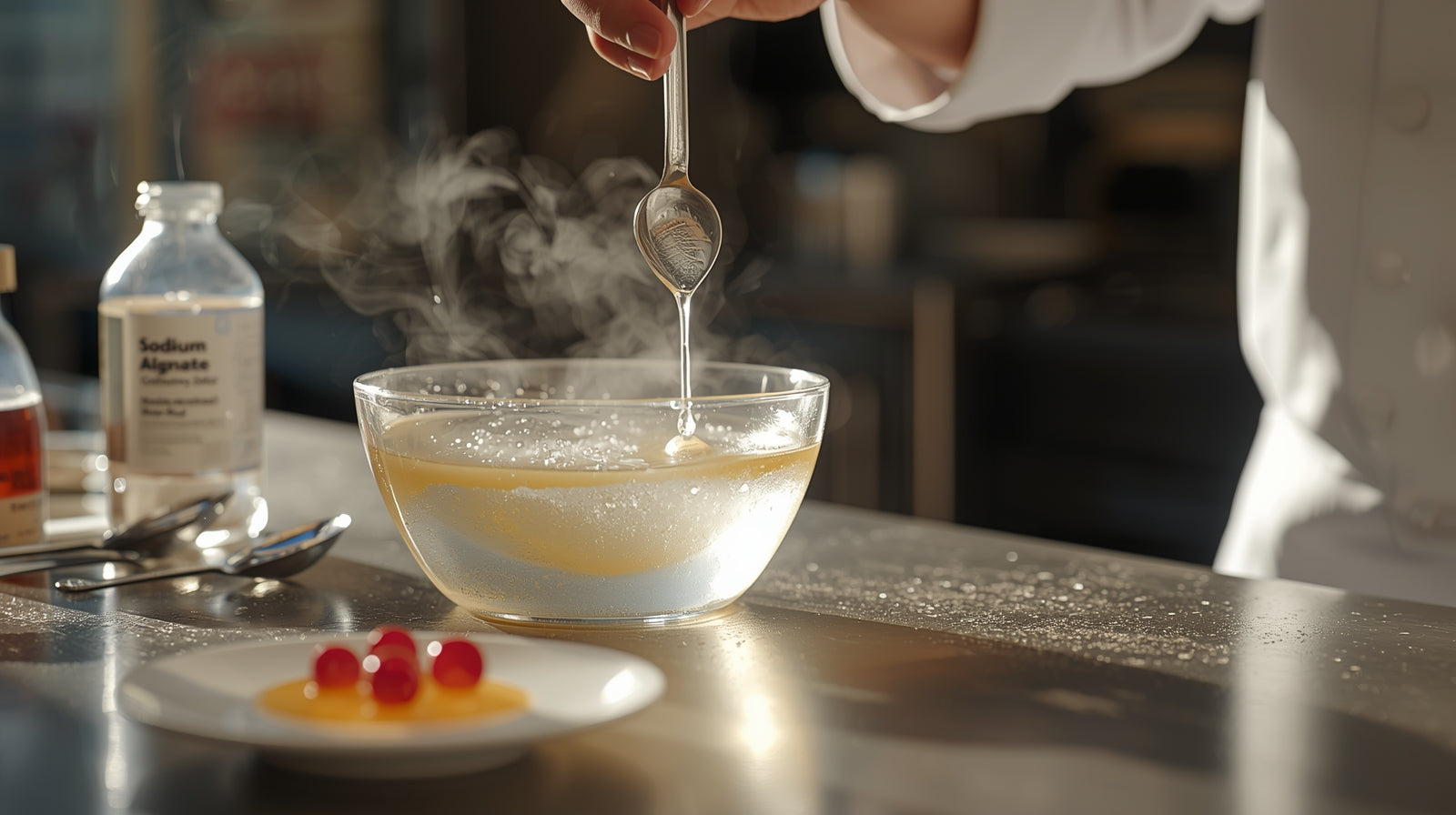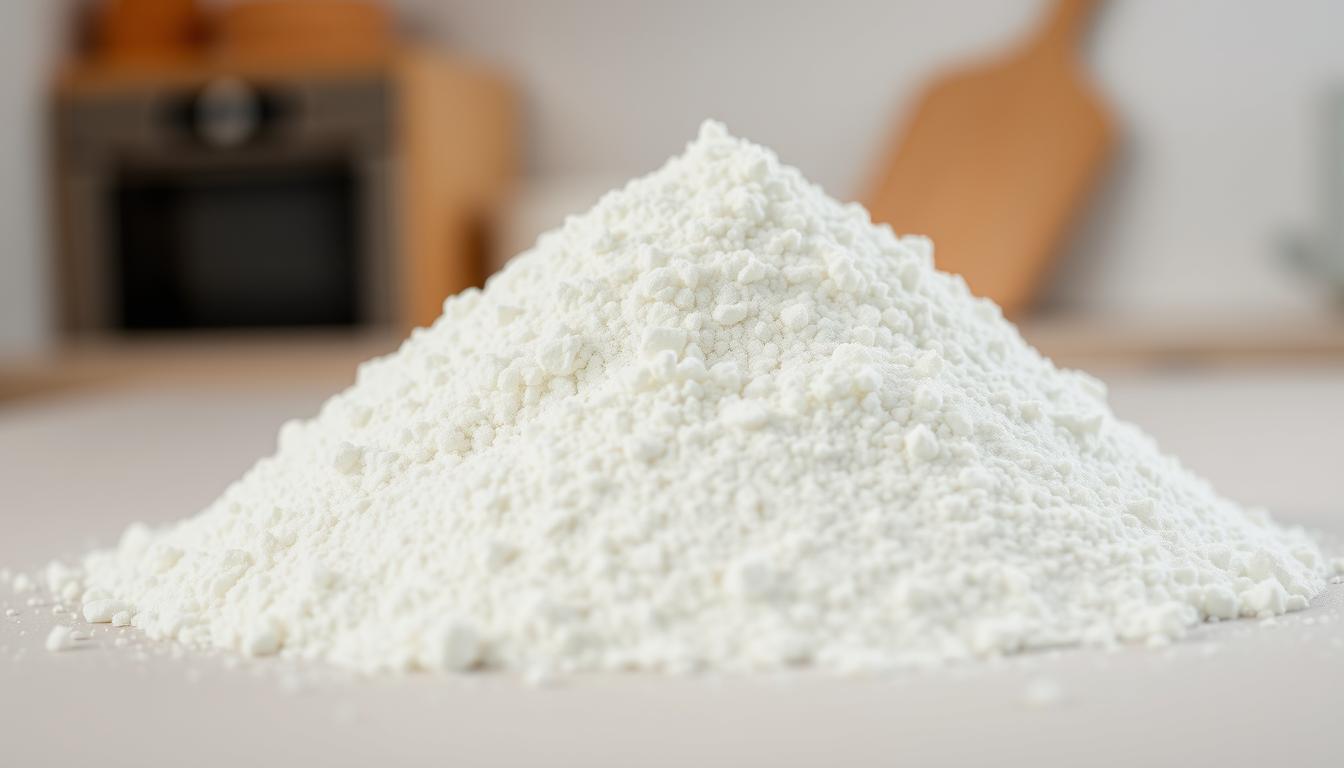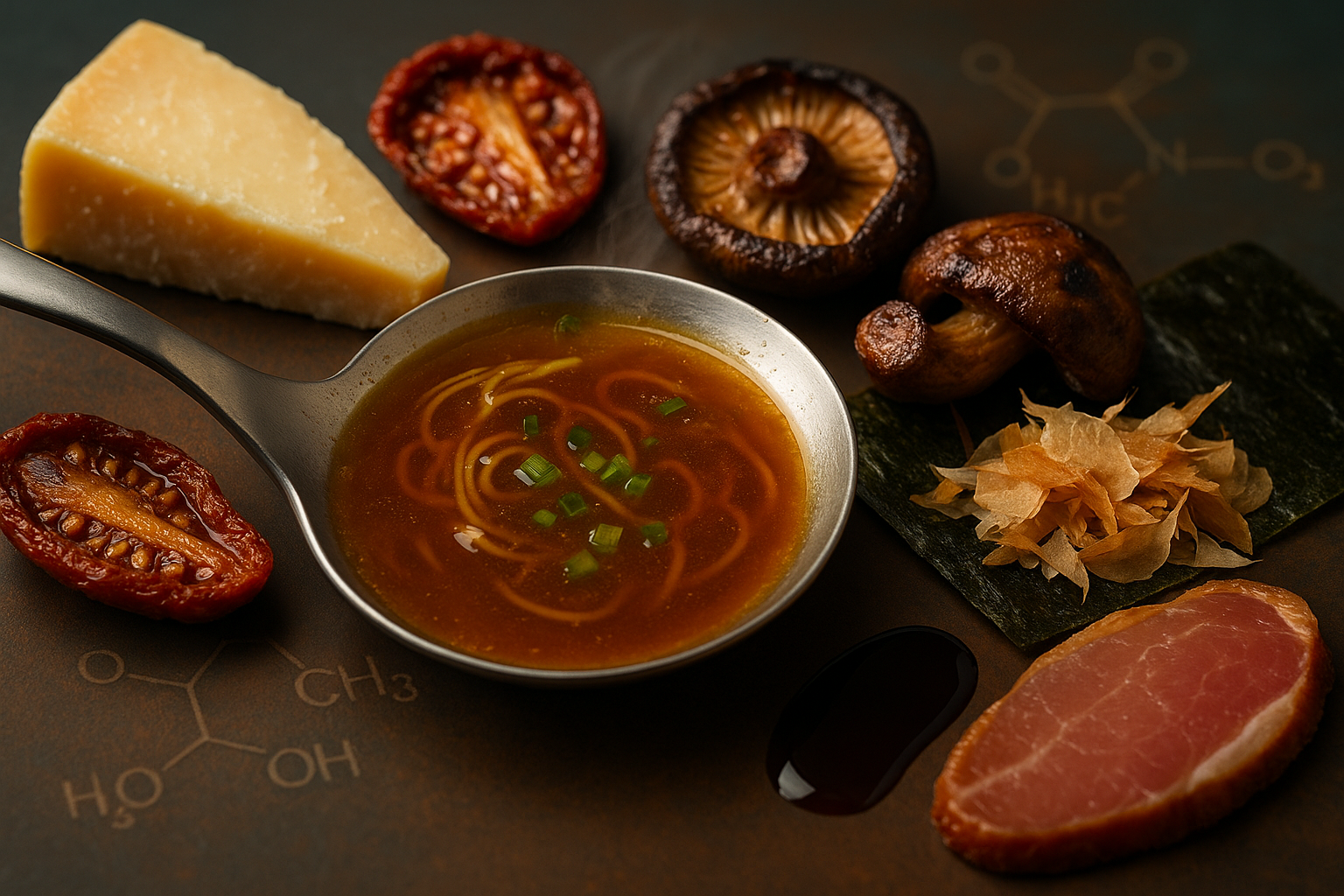
The Plant-Based Food Science Guide
SUBSCRIBE TO OUR BLOG
Promotions, new products, and recipes.
The Plant-Based Food Science Guide: How Ingredients Make Vegan Recipes Work
Have you ever wondered how a creamy vegan cheese can be made without dairy? Or how plant-based burgers achieve that satisfying meaty texture? The answers lie in plant-based food science – the fascinating field that explores how plant ingredients function and interact to create delicious vegan foods. Whether you're new to plant-based cooking or looking to elevate your skills, understanding the science behind your ingredients will transform your culinary results from good to exceptional.
In this guide, we'll explore the molecular magic happening in your kitchen when you work with plant-based ingredients. You'll discover how proteins coagulate, starches gelatinize, and how simple ingredients can mimic complex animal-based textures and flavors. By understanding these principles, you'll gain the confidence to experiment, troubleshoot, and create your own successful plant-based recipes.
What Is Plant-Based Food Science?
Plant-based food science examines how plant ingredients function at the molecular level
Plant-based food science is the study of how plant ingredients function at the molecular level and how they can be manipulated to create foods with specific textures, flavors, and nutritional profiles. Unlike traditional food science which often focuses on animal proteins, plant-based food science explores the unique properties of plant proteins, fibers, starches, and other compounds to develop foods that satisfy both nutritional needs and sensory expectations.
At its core, this field examines how plant materials can be structured and processed to replicate the functional properties traditionally provided by animal-derived ingredients. This includes understanding how:
- Plant proteins can be texturized to mimic muscle fibers
- Plant-based fats can be structured to provide specific melting properties
- Carbohydrates and fibers can be manipulated to create desired mouthfeel
- Plant compounds can be enhanced to deliver savory, umami flavors
The field combines elements of biochemistry, food engineering, nutrition, and culinary arts to create plant-based alternatives that are not only healthier and more sustainable but also delicious and satisfying.
Protein Substitutes: The Building Blocks of Plant-Based Cooking
Proteins are essential structural components in both traditional and plant-based cooking. In animal products, proteins provide texture, binding, and mouthfeel. Plant proteins can fulfill these same functions when properly selected and prepared.

Common plant protein sources include legumes, tofu, tempeh, and seitan.
Legume Proteins: Nature's Versatile Powerhouse
Soybeans are perhaps the most versatile legume in plant-based cooking. Their high protein content (approximately 36%) and balanced amino acid profile make them nutritionally similar to animal proteins. Soy proteins contain both globulins and albumins that provide excellent gelling, emulsifying, and water-binding properties.
When soybeans are processed into tofu, the proteins coagulate through a process similar to cheese-making. The addition of a coagulant (typically calcium or magnesium salts) causes the proteins to unfold and form a three-dimensional network that traps water and creates tofu's unique texture. This is why tofu comes in different firmness levels – the more water is pressed out, the firmer the texture becomes.
Tempeh, another soy product, undergoes fermentation with Rhizopus oligosporus, which breaks down phytic acid and creates a firmer texture through mycelium growth that binds the soybeans together. This fermentation process also develops complex flavors and improves nutrient bioavailability.
Other legumes like chickpeas, lentils, and peas contain significant amounts of globulin proteins that provide good gelling and binding properties. Pea protein isolate has gained popularity as a soy alternative due to its neutral flavor and functional properties.
Wheat Gluten: Creating Meaty Textures
Vital wheat gluten is the protein component of wheat, isolated through a washing process that removes starch. When hydrated and kneaded, the two main proteins in wheat – glutenin and gliadin – form strong, elastic bonds that create a fibrous, meat-like texture. This is the basis for seitan, which can mimic the chewy texture of muscle tissue.
The science behind seitan's texture lies in the alignment of gluten strands during kneading, which creates a layered structure similar to muscle fibers. When cooked, these proteins set into a permanent structure that can absorb flavors and provide satisfying chew.
"The functional properties of plant proteins are determined by their amino acid composition, molecular size, and three-dimensional structure. Understanding these properties allows us to select the right protein for specific culinary applications."
Functional Properties of Plant Proteins
| Protein Source | Gelling | Emulsifying | Water-Binding | Best Applications |
| Soy Protein | Excellent | Excellent | High | Tofu, meat analogs, dairy alternatives |
| Pea Protein | Good | Good | Medium | Meat alternatives, protein enrichment |
| Wheat Gluten | Poor | Poor | Medium | Seitan, chewy textures |
| Chickpea | Good | Good | Medium | Binding, egg replacements |
| Potato Protein | Good | Excellent | High | Cheese alternatives, texturizers |
Master Plant-Based Protein Applications
Want to learn more about selecting and working with plant proteins? Download our free guide with detailed protein profiles and application techniques.
Download Protein GuideBinding Agents: The Egg Replacers
Eggs perform multiple functions in traditional recipes – they bind, leaven, emulsify, and add moisture. In plant-based cooking, we need to understand which specific egg function we're trying to replace in order to select the appropriate alternative.
Seed Gels: Flaxseed and Chia
When ground flaxseeds or chia seeds are mixed with water, they form a gel-like substance that can mimic the binding properties of eggs. This happens because these seeds contain soluble fiber and mucilage that absorb water and create a viscous solution.
The science behind this transformation involves polysaccharides (complex carbohydrates) that unfold and form a network when hydrated. This network traps water molecules, creating a gel that can hold ingredients together in baked goods.
How to use: Mix 1 tablespoon of ground flaxseed or chia seeds with 3 tablespoons of water and let sit for 5-10 minutes until it develops a gel-like consistency. This mixture replaces one egg in most baking recipes.
Aquafaba: The Miraculous Bean Water
Perhaps one of the most fascinating discoveries in plant-based cooking is aquafaba – the liquid from cooked chickpeas or other legumes. This unassuming liquid contains a mixture of proteins, starches, and saponins that give it remarkable properties.
When whipped, aquafaba can form stable foams similar to egg whites. This happens because the proteins in aquafaba unfold (denature) during whipping, creating new bonds that trap air bubbles. The starches and saponins help stabilize these bubbles, preventing them from collapsing.
How to use: 3 tablespoons of aquafaba can replace one egg white. For best results, reduce aquafaba by simmering until slightly thickened before whipping.
Starches and Gums: Structure Builders
Various starches and gums can provide binding properties through their ability to absorb water and form gels. Potato starch, cornstarch, and arrowroot work by gelatinizing when heated with liquid – the starch granules absorb water, swell, and eventually burst, releasing amylose and amylopectin that form a network.
Xanthan gum and guar gum are polysaccharides that create viscous solutions even at low concentrations. They work by forming hydrogen bonds with water molecules, creating a three-dimensional network that provides structure.
Science Spotlight: Hydrocolloids
Many plant-based binding agents are classified as hydrocolloids – substances that form gels or viscous solutions when mixed with water. The term comes from "hydro" (water) and "colloid" (particles suspended in another medium). Understanding how different hydrocolloids behave under various conditions (temperature, pH, salt concentration) is key to successful plant-based cooking.
Flavor Enhancers: Creating Depth and Umami
One of the biggest challenges in plant-based cooking is replicating the complex, savory flavors often associated with animal products. This is where understanding flavor chemistry becomes crucial.

Plant-based flavor enhancers rich in glutamates and nucleotides provide umami depth.
Umami: The Fifth Taste
Umami, often described as "savory" or "meaty," is recognized as the fifth basic taste alongside sweet, sour, salty, and bitter. It's primarily triggered by glutamates and nucleotides, compounds that occur naturally in many foods.
Nutritional Yeast: Cheesy Flavor Without Dairy
Nutritional yeast is deactivated yeast (Saccharomyces cerevisiae) that has been grown specifically as a food product. Its distinctive cheesy, nutty flavor comes from glutamates that develop during processing.
How to use: Sprinkle on dishes as a finishing touch, blend into sauces for cheesy flavor, or use as a base for plant-based "cheese" sauces.
Fermented Foods: Miso, Tamari, and Tempeh
Fermentation is a powerful process for developing complex flavors. During fermentation, microorganisms break down complex molecules into simpler compounds, releasing flavors and creating new ones.
Miso is made by fermenting soybeans with koji (Aspergillus oryzae) and salt. The fermentation process breaks down proteins into free amino acids, including glutamic acid, which creates its rich umami flavor. Different varieties of miso (white, yellow, red, dark) have undergone different fermentation periods, resulting in varying flavor intensities.
Tamari and soy sauce are byproducts of fermented soybeans, with tamari traditionally being the liquid that accumulates during miso production. The fermentation process creates over 300 different aroma and flavor compounds.
Umami-Rich Vegetables
- Mushrooms, especially dried shiitake, contain guanylate, a nucleotide that synergizes with glutamates to amplify umami taste
- Tomatoes, particularly when concentrated through roasting or sun-drying, develop higher levels of glutamates
- Seaweed varieties like kombu are among the richest natural sources of glutamates
- Fermented black garlic develops complex sweet-savory notes through the Maillard reaction during its production
The Maillard Reaction in Plant-Based Cooking
The Maillard reaction is a chemical reaction between amino acids and reducing sugars that occurs when foods are heated, creating hundreds of different flavor compounds. This reaction is responsible for the browned, complex flavors in seared meats, toasted bread, and roasted coffee.
In plant-based cooking, encouraging the Maillard reaction can significantly enhance flavor. Techniques include:
- Using higher cooking temperatures (above 280°F/140°C)
- Reducing moisture on food surfaces before cooking
- Adding small amounts of reducing sugars (like maple syrup)
- Adjusting pH with alkaline ingredients like baking soda
Elevate Your Plant-Based Flavor Profile
Discover our complete guide to creating depth and umami in plant-based cooking with 25 flavor-building techniques.
Get the Flavor GuideTexture Modifiers: Creating Structure and Mouthfeel
Texture is a critical component of food enjoyment, and creating satisfying textures in plant-based foods often requires understanding how different ingredients interact to form structures.
Texture modifiers like gums, starches, and gels create specific mouthfeel properties
Gelling Agents: Creating Solid Structures
Agar-Agar: The Plant-Based Gelatin
Agar-agar is derived from red seaweed and consists primarily of two polysaccharides: agarose and agaropectin. When heated in water and then cooled, these polysaccharides form a double helix structure that creates a firm, brittle gel.
Unlike animal-derived gelatin, agar sets at room temperature and remains solid at higher temperatures. This makes it ideal for applications where stability in warm conditions is needed.
How to use: Typically, 1 teaspoon of agar powder will set 1 cup of liquid. For a softer gel, reduce the amount of agar.
Carrageenan: Versatile Seaweed Extract
Carrageenan is another seaweed-derived gelling agent with unique properties. There are several types of carrageenan (kappa, iota, and lambda), each creating different gel textures.
Kappa-carrageenan forms firm, brittle gels similar to agar, while iota-carrageenan creates soft, elastic gels. Lambda-carrageenan doesn't gel but thickens solutions.
Starches: Thickeners and Texturizers
Tapioca Starch
Extracted from cassava root, tapioca starch creates a stretchy, slightly chewy texture that's ideal for mimicking the stretchiness of melted cheese. It gelatinizes at a relatively low temperature and produces a clear, glossy gel.
Best for: Cheese alternatives, puddings, and chewy textures
Potato Starch
Potato starch has large granules that swell significantly during gelatinization, creating a thick, smooth texture. It doesn't contribute flavor and works well in cold applications.
Best for: Sauces, creamy textures, and cold applications
Cornstarch
Cornstarch creates a firm gel when cooked and cooled. It's particularly useful for thickening at higher temperatures and creates a slightly opaque appearance.
Best for: Hot applications, firm gels, and immediate consumption
Hydrocolloid Gums: Stabilizers and Thickeners
Xanthan Gum: The Universal Stabilizer
Xanthan gum creates a viscous solution even at very low concentrations (0.1–0.5%). It maintains its properties across a wide range of temperatures, pH levels, and salt concentrations.
How to use: Start with very small amounts (1/8–1/4 teaspoon per cup of liquid) and blend thoroughly to avoid clumping.
Methylcellulose: The Reverse-Setting Gum
Methylcellulose gels when heated and liquefies when cooled – ideal for plant-based meat alternatives. (If/when you list methylcellulose, link here.)

Plant-based meat alternatives use a combination of proteins and methylcellulose to create juicy, meat-like textures.
Synergistic Effects in Texture Modification
A small amount of xanthan combined with locust bean gum creates a more elastic, cohesive gel than either ingredient used separately.
The Science of Emulsification in Plant-Based Cooking
Emulsification is the process of combining two immiscible liquids (like oil and water) into a stable mixture. Many traditional recipes rely on eggs for emulsification, but plant-based cooking offers several effective alternatives.
Plant-Based Emulsifiers
Lecithin
Soy lecithin is a phospholipid derived from soybeans. It’s particularly effective at stabilizing oil-in-water emulsions like mayonnaise and dressings.
How to use: 0.5–1% of the total mixture. Available in liquid or granular form.
Prefer non-soy? Try sunflower lecithin (non-GMO).
Aquafaba
Beyond foams, aquafaba is also an effective emulsifier. The proteins and saponins position themselves at the oil-water interface, preventing droplets from coalescing.
Plant Milks
Higher-protein plant milks (like soy milk) can also help emulsify by unfolding proteins at the interface.
Creating Stable Emulsions
- Droplet size: Smaller droplets = more stable (use high-shear blending).
- Viscosity: Increase viscosity slightly (a touch of xanthan gum helps).
- Temperature: Most emulsions are more stable at room temperature or cooler.
- Addition rate: Add oil slowly while mixing for finer droplets.
"Understanding emulsification is key to creating creamy plant-based sauces, dressings, and dairy alternatives. The right emulsifier can transform separate ingredients into a cohesive, stable whole."
Master Plant-Based Textures
Ready to create perfect textures in your plant-based cooking? Download our comprehensive texture guide with formulation tips and troubleshooting advice.
Get the Texture GuidePractical Tips for Plant-Based Recipe Development

Precise measurements and methodical testing are key to successful plant-based recipe development
Optimizing Ingredient Ratios
- Protein structure builders: For meat alternatives, aim for a protein content of 15–25% of the total formula weight to create substantial texture.
- Binding agents: When replacing eggs in baking, use approximately 3–4% binding agent by weight of the total formula for proper structure.
- Fat content: For rich mouthfeel in dairy alternatives, incorporate 10–15% fat from sources like coconut oil, cocoa butter, or nut-based creams.
- Hydrocolloids: Start with 0.1–0.5% of the total formula weight and adjust based on desired texture – less for flowing sauces, more for firm gels.
- Flavor enhancers: Layer multiple umami ingredients rather than using a large amount of a single ingredient for more complex flavor profiles.
Understanding Ingredient Interactions
Why did my plant-based cheese not melt properly?
Balance fats, proteins, and starches. For stretch, increase tapioca starch; for mouthfeel, adjust fat type (e.g., coconut oil or cocoa butter).
Why did my plant-based burger fall apart during cooking?
Insufficient binding. Add methylcellulose (0.5–1%) or increase sticky starches like tapioca. Hydrate thoroughly before cooking.
Why is my plant-based cream sauce separating?
Try 0.5–1% lecithin, and a pinch of xanthan gum (0.1–0.2%) to increase viscosity.
The Importance of Hydration and Resting Time
Allow mixtures to rest 15–30 minutes before cooking for full hydration of proteins, starches, and gums. For applications like seitan or firm tofu pressing, longer rests (several hours or overnight) may be beneficial.
Example Recipes: Science in Action
Aquafaba Meringue

Aquafaba forms stiff peaks similar to egg whites due to its protein and saponin content
Ingredients:
- 3/4 cup aquafaba (liquid from one 15 oz can of chickpeas)
- 1/4 teaspoon cream of tartar
- 3/4 cup granulated sugar
- 1 teaspoon vanilla extract
Method:
- Reduce the aquafaba by simmering until volume is reduced by about 1/3 (to approximately 1/2 cup). Cool completely.
- In a clean, grease-free bowl, whip the reduced aquafaba and cream of tartar on high speed until foamy (about 2 minutes).
- Gradually add sugar, 1 tablespoon at a time, while continuing to whip.
- Continue whipping until stiff, glossy peaks form (about 7–9 minutes total).
- Fold in vanilla extract gently.
Cultured Cashew Cheese

Cultured cashew cheese develops complex flavors through controlled fermentation
Ingredients:
- 2 cups raw cashews, soaked overnight
- 2 tablespoons nutritional yeast
- 2 tablespoons lemon juice
- 1 teaspoon salt
- 1 probiotic capsule (or 2 tablespoons rejuvelac)
- 1/4 cup water (as needed)
Take Your Plant-Based Cooking to the Next Level
Want to master all these techniques and more? Download our complete Plant-Based Food Science Guide with detailed explanations, formulation tips, and 15 science-based recipes.
Download Complete GuideConclusion: The Future of Plant-Based Food Science

Plant-based food science continues to evolve, creating increasingly sophisticated alternatives
Understanding the science behind plant-based ingredients empowers you to create delicious, satisfying foods that don't rely on animal products. By learning how proteins provide structure, how hydrocolloids create specific textures, and how fermentation develops complex flavors, you can approach plant-based cooking with confidence and creativity.
As you experiment, consider adding pro tools from our Kits & Tools collection for precise temperatures, pH, and measurements.

|
About the Author Ed is the founder of Cape Crystal Brands, editor of the Beginner’s Guide to Hydrocolloids, and a passionate advocate for making food science accessible to all. Discover premium ingredients, expert resources, and free formulation tools at capecrystalbrands.com/tools. — Ed |
Enjoyed this post? Subscribe to The Crystal Scoop
Food-science tips, ingredient know-how, and recipes. No spam—unsubscribe anytime.
- Choosing a selection results in a full page refresh.



